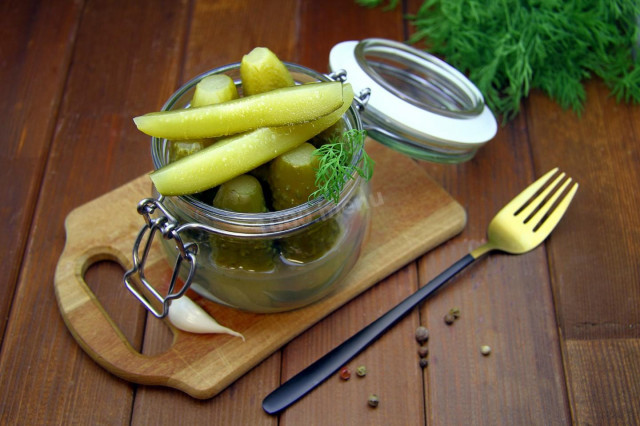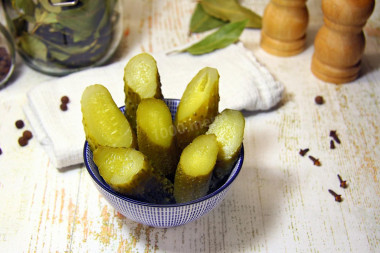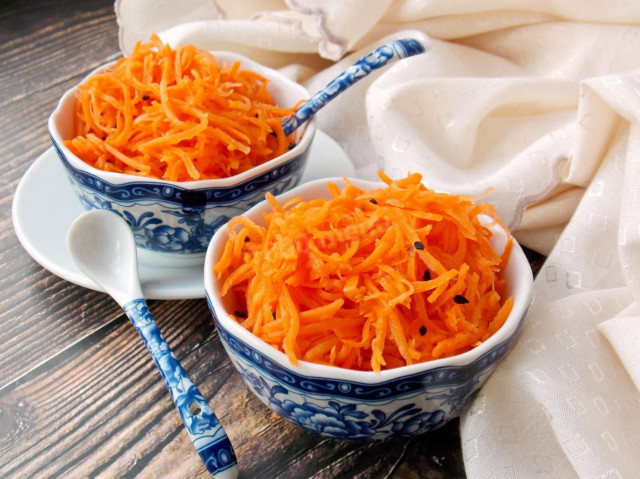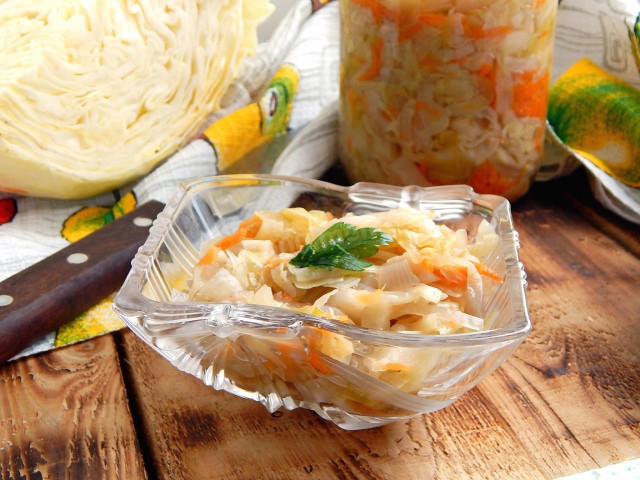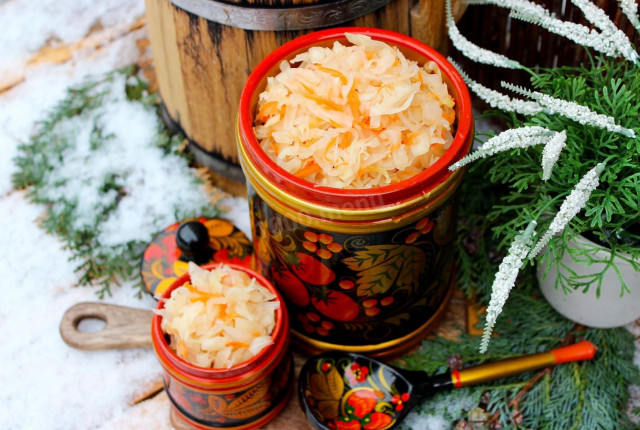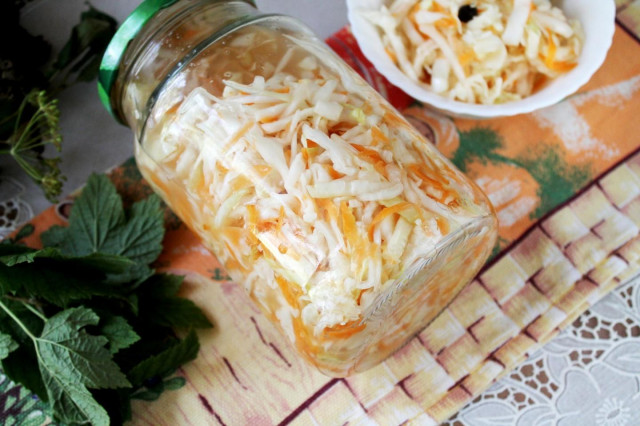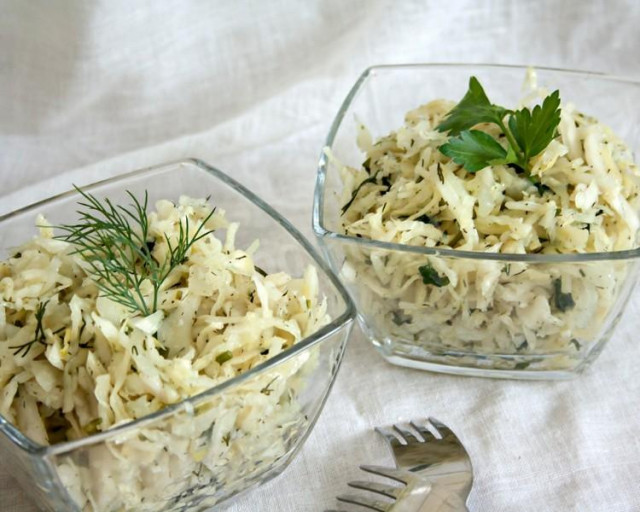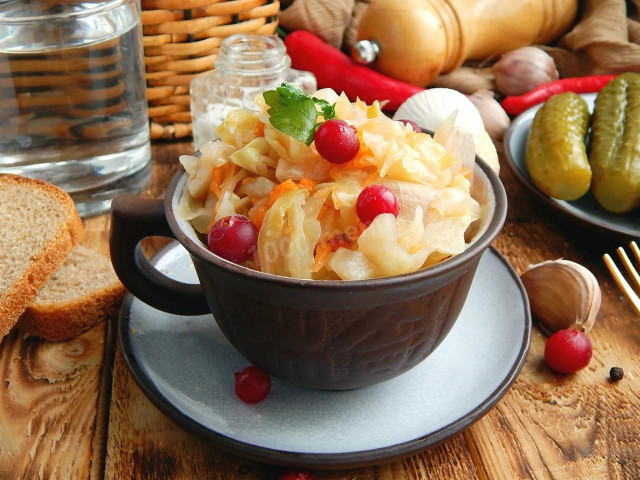Composition / ingredients
Step-by-step cooking
Step 1:
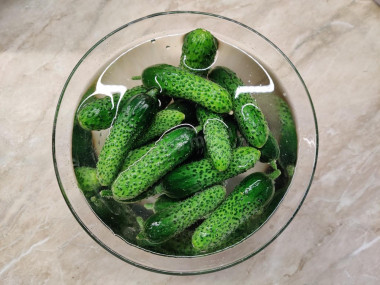
In order for the pickled cucumbers to remain, with everything, also crispy, I pre-soak the vegetables in cold water for at least two hours. This time I had cucumbers in the water for about four hours. And it only did them good! They have become as firm and juicy as possible.
Step 2:
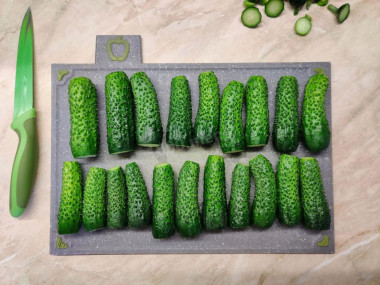
Rinse cucumbers thoroughly and cut off the tips on both sides.
Step 3:
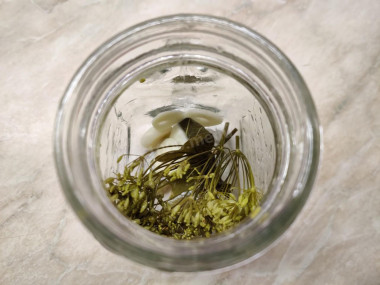
There is no point in sterilizing jars for pickled cucumbers beforehand, since the fermentation process is a living process, and the jars will still be literally littered with lactic acid bacteria. It will even be visible to the naked eye! Therefore, the cans are simply washed well. You can use soda. Put oak leaves, sliced garlic and a couple of dill umbrellas in jars.
Step 4:
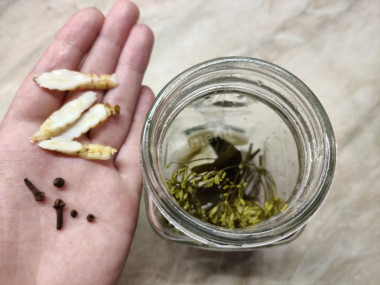
Add chopped horseradish root, a couple of fragrant clove buds and black pepper peas.
Step 5:
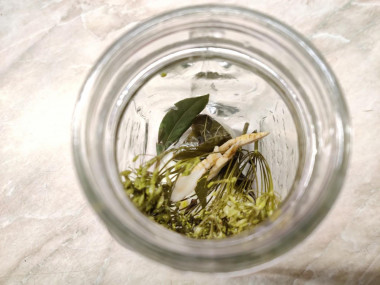
Be sure to add a small bay leaf.
Step 6:
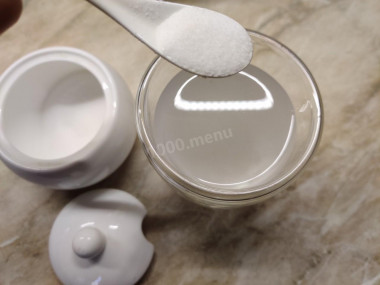
Prepare the brine. One liter of cold drinking water should have one hundred grams of salt. This is not a typo, the brine should be over-salted. Stir the brine until the salt is completely dissolved. This is necessary so that the same amount of equally salty water gets into each jar.
Step 7:

Place cucumbers in jars vertically, close to each other. Pour the prepared brine. You don't need to boil it, heat it, too. Cold salted brine - that's what you need! Banks must be placed on trays (or saucers) and simply covered with lids. Cucumbers are left alone at room temperature for four days.
Step 8:
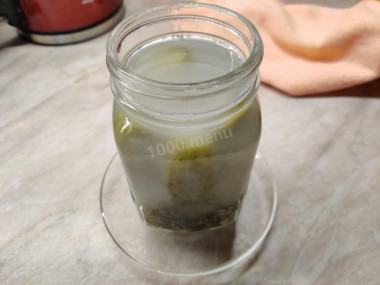
As a result, the natural process of fermentation or, in another way, fermentation is started. In jars with cucumbers, a white precipitate forms, the brine becomes cloudy. On the surface of the brine, a mold cap may even form near the neck. This is absolutely normal!
Step 9:
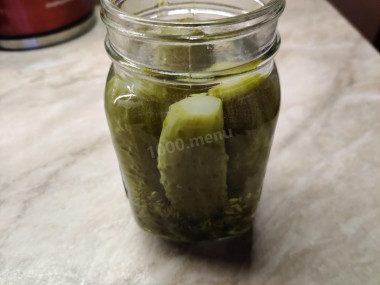
The over-salted brine has worked out, it is simply poured out. Cans, along with cucumbers, are washed with ordinary drinking water from the tap. The task is to wash off the white plaque from both the jar and the cucumbers themselves. Then pour the cucumbers with the same cold tap water up to the neck and roll up the lids, which were previously simply scalded with boiling water. But it's too early to put the cans away for storage!
They should be left at room temperature on trays in a prominent place for another seven days. This is done in order to make sure that there is no continuation of the fermentation process.
Pickling and pickling, in fact, are the same process. Both there and there, lactic acid bacteria enter into work, which have a preservative effect on vegetables.
By the way, an interesting point: during the fermentation process, not only lactic acid and carbon dioxide are formed in jars with cucumbers, but also half a percent of ethyl alcohol! There is a place to roam! :)
After the jars are rolled up with lids, the fermentation process can still continue. For example, due to the fact that the cans were poorly washed.
If you can see that the lids are slightly swollen, then you need to rinse the cucumbers again, pour water over them again and seal them again.
You can store such vigorous cucumbers at room temperature in a dark room all winter.
Bon appetit!
Calorie content of the products possible in the composition of the dish
- Fresh cucumbers - 15 kcal/100g
- Garlic - 143 kcal/100g
- Carnation - 323 kcal/100g
- Bay leaf - 313 kcal/100g
- Dill greens - 38 kcal/100g
- Black pepper peas - 255 kcal/100g
- Salt - 0 kcal/100g
- Water - 0 kcal/100g
- Horseradish Root - 59 kcal/100g
- Oak leaves - 0 kcal/100g

